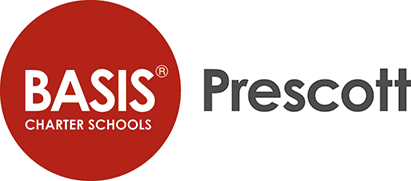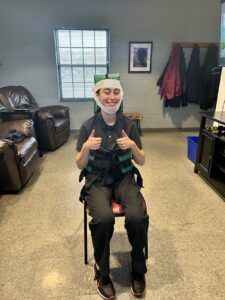Week 7: Fires, Frequent Flyers, and Riders
Sofia R -
Hello!
This week came with a very abrupt start. As many locals may have seen, there was a massive structure fire in Prescott Valley on Easter night/ Monday morning. This not only disrupted my day, but also changed everything in the department. I was stationed downtown and expected to ride with a certain crew, but when I arrived at the building it was packed with fire fighters from out of town. The intensity of this structure fire required all of Prescott’s resources, and so agencies from local areas had to take over covering the town. The only people I knew were “liaisons.” Four Prescott firefighters were at the station, guiding outside crews around town when calls came in for other emergencies. This experience was somewhat of a whirlwind, but it was interesting to see how mass incidents were handled. Although this does not necessarily pertain to my project, it was something that was extremely interesting to see.
On my next ride of the week, I got to go to a certain patient’s home for the third time since starting my project. I have seen this person so many times on rides and when I was working in the ER of my local hospital that I already know their history. This patient is very interesting because they do have complex medical history that could cause harm to them in the future, but they also have extreme anxiety that they have been unable to get under control. This raises a few questions for me. One, could this patient one-day experience devastating physical manifestations from their anxiety that could also worsen their already poor health? Two, why has this patient been unable to live without such severe anxiety; could it be a case of being incapable of receiving help or being looked over because they are so well known? Either way, this situation is very saddening for me, and I am interested to see what is done on the clinical side of care.
Lastly, I got to learn how to stabilize “broken” bones this week! A captain let me learn how to splint different types of injuries, and even had me practice asking different assessment questions as if it was a real call. I “treated” a broken wrist, a dislocated elbow, whiplash, a possible spine fracture, and a mid-femur break. With every different injury, I learned how to use different materials. Below is what I used:
Sam Splint: A bendy, semi-solid board that providers can mold to a patient’s limb, often used to stabilize broken arms and wrists.
Sling: A fabric that gets tied around a patients arm that helps relieve pressure off breaks/dislocations. Often used on broken arms or dislocated shoulders.
Traction Splint: A device specifically used on mid-femur breaks that resets the bone into a proper position. Providers can strap it to a patient’s leg and pull on a string which extends the leg, allowing the bone to move back into a correct position. This is also safe to use in an x-ray!
C-collar: A collar that is wrapped around a patient’s neck that is used to stabilize the neck. Often used in cases where there could be damage to the neck or spinal cord.
KED Board: A “vest” that is placed on patients that are mainly in car accidents. It is wrapped around someone who is in a seated position and allows for stabilization of the spine. when picked up, patients stay in the seated position. They can either remain in this device or transferred to a solid board where they lay down. Below is a picture of me in a KED board…


Comments:
All viewpoints are welcome but profane, threatening, disrespectful, or harassing comments will not be tolerated and are subject to moderation up to, and including, full deletion.